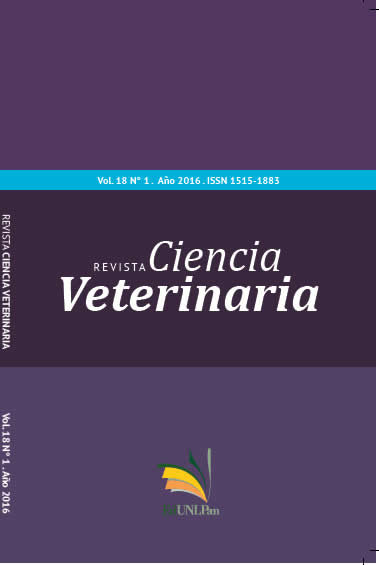Evaluation of cardiac insult in steers with different dietary sodic monensin concentration measured thought miocardic kreatin kinaza
Keywords:
feedlot health, monensina, myocardial creatine ki - nase, cardiac damageAbstract
The aim of this study was to evaluate a possible myocardial damage on feedlot steers caused by high doses of monensin (MN). A commercial kit was used to determinate the concentration of myocardial creatine kinase (CK-MB). Four groups of animals were conformed according to the diet MN concentration. G1: Control, without MN, G2: MN Tag dose, 1 mg kg body weight (BW) -1 , G3: MN 5 mg kg BW -1 and G4: MN 10 mg kg BW -1 The cattle were housed in pens for eleven days. Venous blood samples were taken at 0, 48, 120, 168 and 264 h. Serum CK-MB concentration was analyzed using descriptive and comparative statistics analysis of variance (ANOVA) with a significance level of P<0,05. No CK-MB mean concentration above cut-off level (90 U/l) was recorded throughout the assay for any treatment. The G1 mean throughout the assay was 47,84 ± 21,28 U/l showing statistical differences (P<0.05) from 120 h up to the end of the study, as compared to the others groups. Means of G2, G3 and G4 were 37,31 ± 37,31; 34,09 ± 12,96; 34,62 ± 19,90 U/l, respect tively. This study could not determine heart damage caused by MN, measured through a commercial kit, despite the widespread time assessed. The control group had higher CK-MB mean concentration than all others groups, from 48 h until the end of the study. This result could indicate a possible beneficial and regulatory effect on digestive microflora by the MN antibiotic, resulting in less exposure to bacterial endotoxins
Downloads
Downloads
Published
How to Cite
Issue
Section
License
Al momento de enviar sus contribuciones, los colaboradores deberán declarar , de manera fehaciente, que poseen el permiso del archivo o repositorio donde se obtuvieron los documentos que se anexan al trabajo, cualquiera sea su formato (manuscritos inéditos, imágenes, archivos audiovisuales, etc.), permiso que los autoriza a publicarlos y reproducirlos, liberando a la revista y sus editores de toda responsabilidad o reclamo de terceros , los autores deben adherir a la licencia Creative Commons denominada “Atribución - No Comercial CC BY-NC-SA”, mediante la cual el autor permite copiar, reproducir, distribuir, comunicar públicamente la obra y generar obras derivadas, siempre y cuando se cite y reconozca al autor original. No se permite, sin embargo, utilizar la obra con fines comerciales.



4.png)


7.png)



